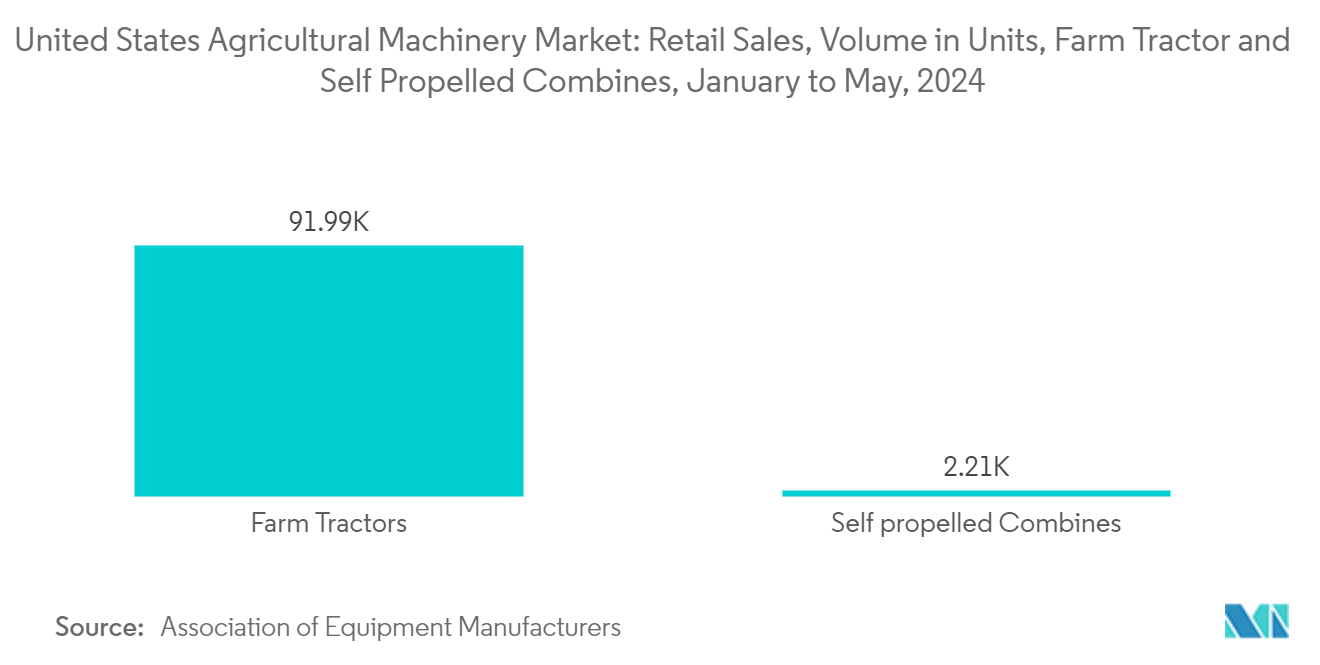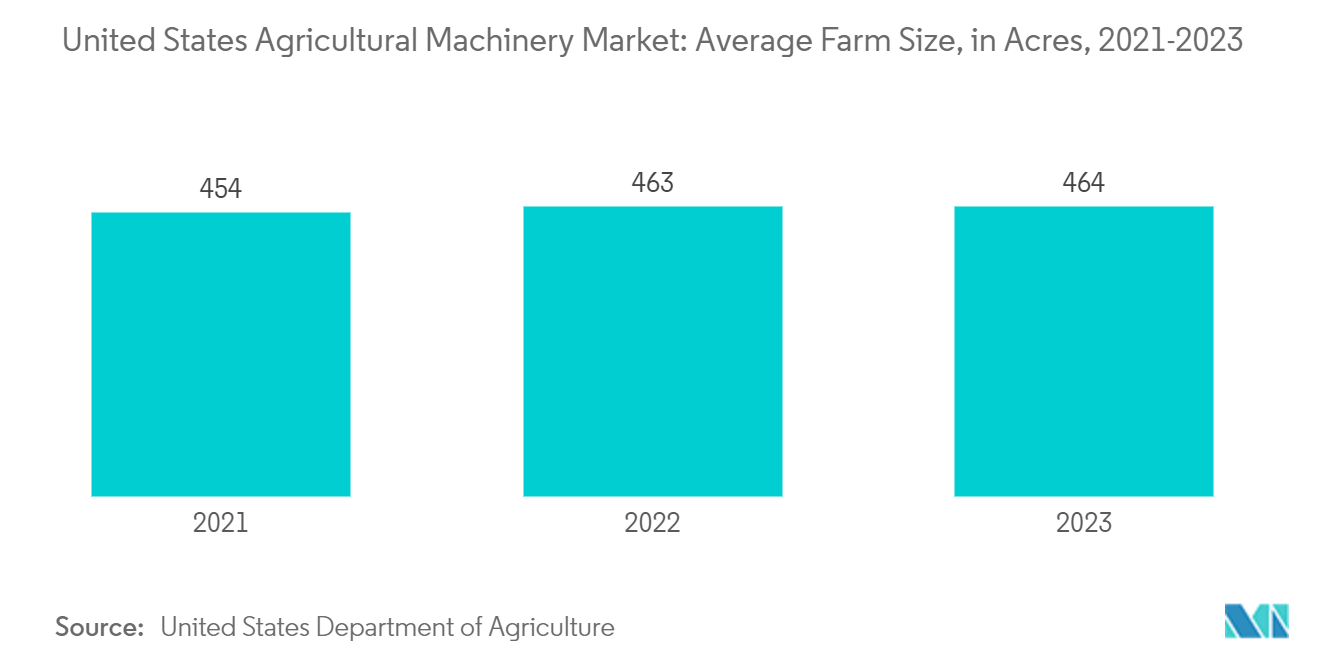Market Trends of United States Agricultural Machinery Industry
Tractors Segment dominates the Market
In the United States, tractors dominate the agricultural machinery landscape. The nation's tractor market has evolved, prioritizing power, precision, and efficiency, especially when compared to larger machines like combines. For example, data from the Association of Equipment Manufacturers reveals that from January to May 2024, U.S. retail sales saw 91,987 farm tractors sold, while self-propelled combines lagged with only 2,205 units. Furthermore, U.S. farmers have benefited from timely subsidies on agricultural tractor purchases. These subsidies have empowered even small-scale farmers to invest in tractors, driving up sales numbers.
Moreover, the U.S. has witnessed a surge in the autonomous tractor market, paralleling global advancements in automation technology. This trend positions the U.S. as a leading global market for autonomous tractors, bolstering overall tractor sales. Domestic players are actively engaging in R&D, pushing the envelope with advanced tractor launches. For instance, CLAAS unveiled its modified XERION tractor line in 2023, boasting powertrain tweaks, enhanced hydraulic flow, and greater versatility. These upgrades are featured on the Xerion 5000 and 4500 models, available in TRAC or TRAC VC configurations. Thus, with subsidies, a booming autonomous tractor market, and major companies rolling out new models, the U.S. tractor segment is poised for growth in the coming years.

Consolidation of Farms is driving the Mechanization
In the United States, agricultural production has increasingly consolidated. In the 21st century, a smaller number of large, specialized farms dominate agricultural output, primarily located in rural areas home to less than a quarter of the United States population. Nearly half of the nation's farms are family-operated, contributing to a rise in the average farm size. Data from the United States Department of Agriculture indicates that the average farm size grew from 446 acres in 2019 to 464 acres in 2023. Profitability drives this consolidation: larger farms tend to be more profitable.
This trend towards larger farms has led to a decrease in the total number of farms across the United States. USDA data shows a drop from 1.9 million farms in 2022 to 1.8 million in 2023. Consequently, this decline has reduced opportunities within the agricultural sector. Coupled with labor migration, this reduction in opportunities has spurred a rise in farm mechanization and the adoption of modern equipment, fueling market growth.
As labor costs rise and larger farms demand more manpower, a significant chunk of profits is now funneled into labor payments, squeezing profitability. Moreover, relying solely on labor is time-intensive, often proving inefficient for farm owners. Consequently, there's a marked shift towards agricultural machinery adoption. Thus, the interplay of rising labor costs and expanding farm sizes is propelling this machinery adoption, bolstering market growth in the coming years.


